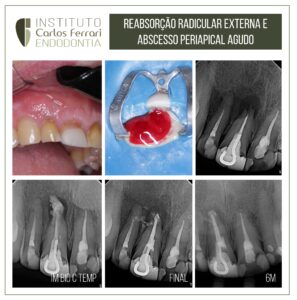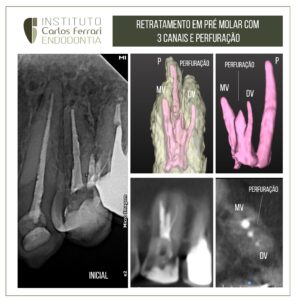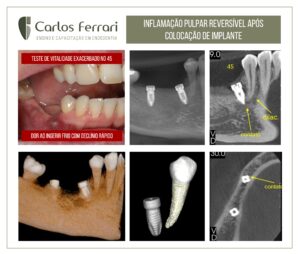Lima manual em calcificação do canal radicular no terço médio. Tratamento endodôntico com obliteração da luz do canal acessado de maneira tradicional, com pontas diamantadas finas e muita paciência
Caso realizado na turma III de especialização em endodontia na HPG Brasília pela aluna Alessandra.
Machado, Ricardo. Endodontia: Princípios Biológicos e Técnicos. Disponível em: Grupo GEN, Grupo GEN, 2022:
Introdução
De acordo com o Glossário de Termos Endodônticos da Associação Americana de Endodontistas (2012), a obliteração do canal radicular (OCR) ou metamorfose cálcica, é a resposta pulpar a um traumatismo, caracterizada pela rápida deposição de tecido mineralizado no espaço intracanal. Acredita-se que o traumatismo leva ao comprometimento do suprimento vasculonervoso pulpar, gerando isquemia, o que induz a deposição de tecido mineralizado. Além do traumatismo, fatores como cárie, abfração, abrasão, capeamento pulpar, pulpotomia, problemas oclusas, forças ortodônticas intempestivas, hábitos orais prejudiciais e envelhecimento fisiológico, também podem desencadear a OCR.
Dentes com OCR apresentam coloração amarelada ou castanho-amarelada quando comparados aos “normais”. Tais alterações cromáticas advém de modificações irreversíveis na polpa, como deposição de dentina, degeneração ou inflamação crônica e necrose. A redução no espaço pulpar coronário, associada ao gradual estreitameto do canal, confere a opacidade característica observada nesses casos.
A princípio, dentes com OCR, não apresentam sensibilidade a palpação e a percussão, a menos que também estejam sendo acometidos por alterações pulpoperirradiculares. As respostas aos testes térmicos são geralmente negativas em razão das dificuldades para a estimulação da polpa, uma vez que a câmara pulpar encontra-se obliterada. Tais respostas são variáveis quando da realização do teste elétrico.
Devido à intensa deposição de dentina, o espaço pulpar pode parecer completamente obliterado ao exame radiográfico, ainda que possa ser identificado através de cortes histológicos. As mineralizações pulpares caracterizam-se, radiograficamente, como áreas radiopacas dispostas em qualquer parte da câmara ou do canal radicular.
Dentes com OCR são comumente diagnosticados, devido à presença de sinais e sintomas sugestivos, como alteração cromática, manifestações radiográficas e dor. Ainda assim, deve-se sempre considerar associadamente as informações obtidas por meio das semiologias subjetiva e objetiva, e dos exames imaginológicos (radiográfico e tomográfico).
As radiografias digitais (RD) têm proporcionado maior dinamismo no processo de obtenção, bem como o uso de efeitos (filtros) e a possibilidade de ampliação das imagens, auxiliando sobremaneira na identificação e na resolução dos casos de OCR. Por outro lado, as radiografias convencionais podem dificultar sua visualização, favorecendo, inclusive, a não identificação de canais, sobretudo nos casos mais complexos.





